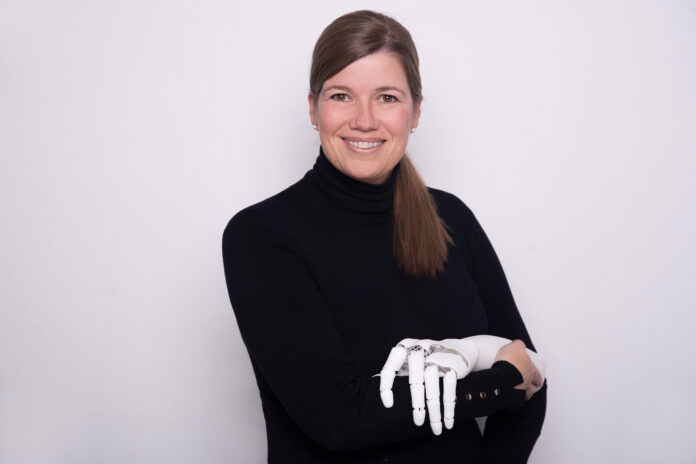The global healthcare additive manufacturing market size is expected to be valued at USD 6.4 billion by 2028 and is anticipated to grow at a CAGR of 21.8% from 2021 to 2028, according to a new report by Grand View Research, Inc. While AM continues to gain traction across various fields of the healthcare segment, we need to recognize that this segment is truly one of its kind. With its own rules, its share of opportunities and barriers, everything has been designed to ensure that new technologies serve the vital needs of patients (end users). However, unlike other vertical industries that often present similarities in terms of integration of these technologies, the healthcare industry has often strived to grow due to its niche nature, and lack of spaces where dedicated knowledge could be shared. A few years ago, Medical goes Additive, a sister organization of Mobility goes Additive,was created to enable organization members – technology providers & users – to drive new and innovative topics, to transfer know-how and to shape the future of applications in medical technology and point of care manufacturing with custom-made solutions.
To remain committed to this mission, the network has pioneered the launch of a medical AM-dedicated event – AM Medical Days – alongside Kumovis, a 3D Systems company, ottobock and University of Basel as other founding partners. Today, as part of this executive Q&A series, we asked Dr. Cora Lüders–Theuerkauf, Network Manager MGA Medical at MGA Mobility where the organization and the medical 3D printing market are headed.
3DA: The organization’s activities seem to have gained a lot of traction since the Covid-19 pandemic. How far/well have they evolved?
The world was in a difficult situation in 2020 when the EU Commission called for the fabrication of breath machines: supply chains had collapsed, official organization was non-existent, hospitals were struggling – therefore quick local solutions were the only option.
During the first wave of the pandemic, we offered two virtual meetings per week for all players using medical equipment, e.g. hospitals, suppliers, industry and F&E institutes. During our online sessions, we informed more than 200 participants about needs and solutions, for example protection equipment like face shields, masks, door openers, spare parts and others. Within our network team we tested equipment and organized donations for aid organizations. With the situation now more under control, more and more companies have broadened their field from their former core competence (e.g. automotive) towards new medical fields and are interested in boosting AM with like-minded players from the industry that can help them overcome problems that one company alone might not be able to face.
3DA: According to you, what are the most important challenges that slow down the adoption of AM technologies in healthcare units?
The implementation of MDR (Medical Device Regulation) and standards are most challenging for healthcare units since they are also suppliers for patients and therefore have a special responsibility. For us as a network, it is important to point out that no one should be slowed down but should be able to operate safely in the manufacturing of medical devices from a regulatory perspective.
3DA: What are the ready-to-commercialize medical 3D printing applications that will foster the most the use of 3D printing in the healthcare industry?
The need for individual medical applications is huge and AM offers a lot of personalized solutions. Many medical applications produced with AM are not yet ready for the market in general but are custom-made or individually adapted to the patient. Dental applications are the most common, followed by orthotics and anatomical models for pre-operative planning and education.
3DA: Are there any limitations you would like to see improve in medical 3D printing technologies?
We would like to see more focus on biocompatible materials that are suitable for both, a medical device, and a 3D printing technology. More and more new materials are entering the market such as silicone, plastics, glass, new alloys, and others. New technologies capable of processing these materials are also slowly becoming more relevant. It is important that regulatory requirements are met with all these innovations, without slowing them down.
3DA: Moving forward, 3D printing will coexist with other technologies in the theatre room. What are they? And how important do you think they are for doctors?
AM, AI, AR and robotics are an interesting quartet, as they complement each other very well. Examples are the digital twin or an AR-driven OR-robot, which is being used in a growing number of hospitals. Manufacturing times and risks in surgeries are reduced, analysis of patient data and therapy models customized to the patient are accelerated. This ensures better patient care, shorter treatments in hospitals and therefore results in real cost savings.
3DA: Anything else you would like to share?
There is a lot of potential in AM for medicine and pharmaceuticals! We now need to implement it in accordance with regulatory requirements. This includes new materials, methods & technologies as well as further use cases, which must be advanced together. Therefore, in our MGA network you will find all players of the value chain who want to work together to advance AM-relevant topics in medicine and pharmacy. We are always open for further expertise, new ideas and use cases.
This Q&A series has first been published in the May/June edition of 3D ADEPT Mag.
Remember, you can post job opportunities in the AM Industry on 3D ADEPT Media free of charge or look for a job via our job board. Make sure to follow us on our social networks and subscribe to our weekly newsletter : Facebook, Twitter, LinkedIn & Instagram ! If you want to be featured in the next issue of our digital magazine or if you hear a story that needs to be heard, make sure to send it to contact@3dadept.com


